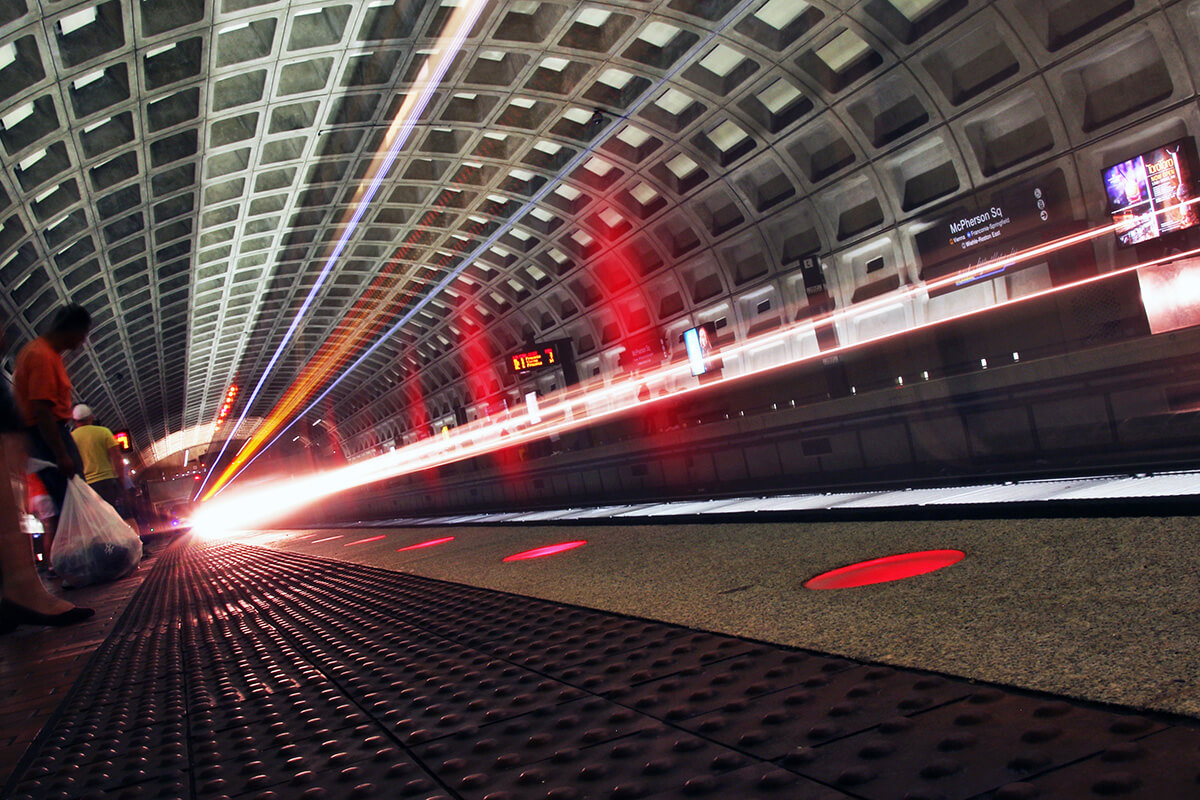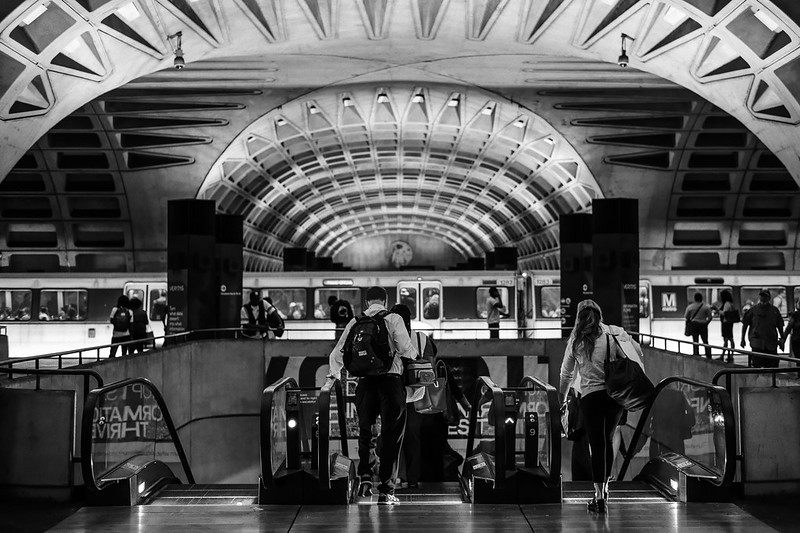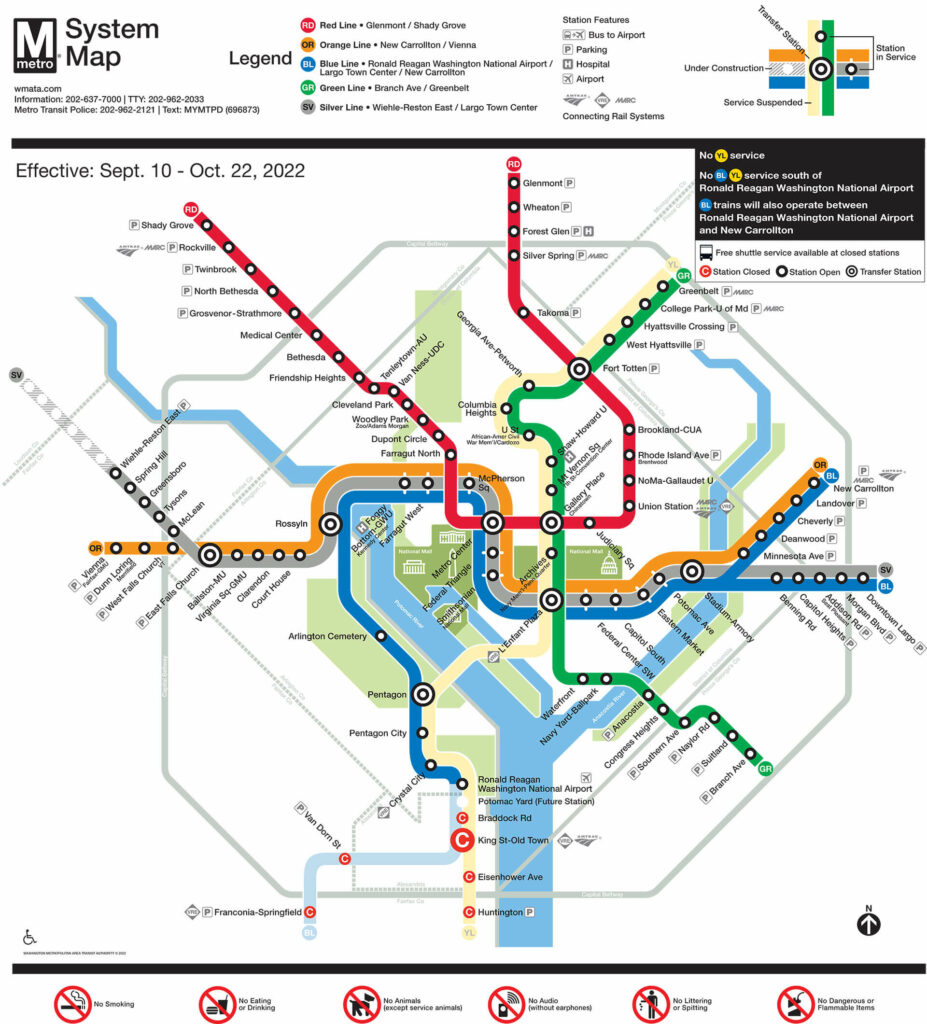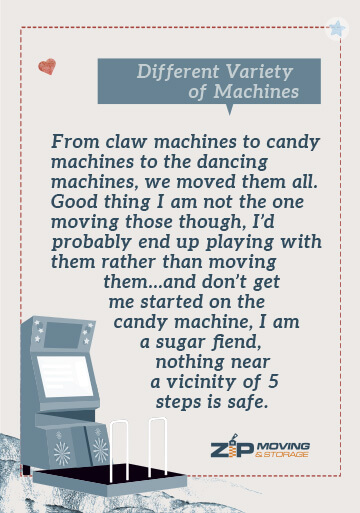If you need movers near you to help you relocate to Washington, D.C., look no further than Zip Moving & Storage. Moving to the U.S. capital is a great plan, and if you don’t have a car, you can also learn how to tour Washington, D.C., via Metro.
Check out these useful tips
How to Tour Washington, D.C. via Metro
The Washington, D.C. Metro is convenient for getting around the city. There are stations everywhere, and the trains are always on time. To start your Metro tour, you can buy a pass for a day, a week, or a month.
Typically, monthly tickets save you money daily and are much more cost-effective. The Metro is also very safe, and plenty of police officers are constantly patrolling the stations and trains. Safety in Washington, D.C., is essential, so it’s no surprise that the Metro lines are well protected.
To tour Washington, D.C. via Metro, follow these steps for a seamless experience:
- Plan Your Route
- Navigate the Stations
- Boarding the Train
- Riding the Metro
- Exploring D.C
Taking the D.C. Metro - Great Locations to Visit Around the Capital
Taking the D.C. Metro offers access to many great locations to visit around the capital. Here are some notable destinations easily reachable via the Metro:
- National Mall: Hop off at the Smithsonian or Federal Triangle stations to explore the iconic National Mall, home to landmarks like the Lincoln Memorial, Washington Monument, and Smithsonian museums.
- Capitol Hill: Disembark at Capitol South or Union Station to experience the political heart of the city. Visit the U.S. Capitol Building, Supreme Court, and Library of Congress.
- Georgetown: Take the Metro to Foggy Bottom-GWU or Rosslyn and transfer to a bus or walk to Georgetown. Discover charming cobblestone streets, historic architecture, and vibrant shops and restaurants along the waterfront.
- National Zoo: Adjacent to the Woodley Park-Zoo/Adams Morgan station, the National Zoo is a must-visit destination for animal lovers. Explore exhibits featuring giant pandas, elephants, and more.
The History of the Washington, D.C. Metro Lines
The Washington Metropolitan Area Transit Authority (WMATA) operates the Washington, D.C. Metro. It has six color-coded lines: Red, Orange, Yellow, Green, Blue, and Silver. The Red Line is the oldest, dating back to 1976, and the Silver Line is the newest, opening in 2014.
There are 91 stations in the Metro System, and you can find which line runs through each by checking the colors at entrances, train destination markings, platforms, and route signs.
The Red Line is the only one that doesn’t intersect with others; that can be complicated for folks that need to change directions and trains. Fortunately, all the other lines intersect at different stations.
Public transportation in most of the U.S. isn’t this commendable or organized, which is why many people give moving to Washington, D.C., an advantage compared to other cities.
How Do You Know Where to Get On and Off the D.C. Metro?
To find the nearest Metro station, use the line map on the WMATA website.
Once you have your map and pass, you’re ready to go! To enter the Metro system, tap your card on the fare gate reader, and the gates will open. When you reach your destination, tap the card again to exit the system.
The Line Routes and Their Corresponding Colors
Six lines operate across the DC area, with 91 stations across 118 miles. These include:
- Red: Glenmont – Shady Grove
- Orange: New Carrolton – Vienna/Fairfax-GMU
- Yellow: Huntington – Fort Totten
- Green: Branch Avenue – Greenbelt
- Blue: Franconia-Springfield – Largo Town Center
- Silver: Wiehle-Reston East – Largo Town Center
How Do You Pay for the D.C. Metro?
The first step is to purchase a Metro pass. You can buy them at any station with credit or debit cards or by loading money onto them in advance. If you plan on riding the Metro multiple times during your visit, you may want to purchase a 7-Day Unlimited Ride Pass.
Here are the types of cards you can purchase to ride the Metro lines in D.C.:
- Metro Farecard – possible to use multiple times per day in various locations until the balance on it comes down to zero, at which point you can top it up at the dispensing machines in all metro stations.
- SmarTrip card – this card covers more than just the Metro; you can also ride the DC Circulator and MetroBus, and use it for Metro parking. It can hold up to $300.
- Metro Pass – this pass is suitable for anyone traveling around town for a few days or a week; the 7-Day Unlimited Ride Pass may be ideal for folks on a DC tour.
Taking the D.C. Metro - Great Locations to Visit Around the Capital
The Washington, D.C. metro system is a great way to see all the city’s sights. Several lines offer unique views of D.C. For example, the Green line runs along the Potomac River and offers views of the Kennedy Center and the Washington Monument; this is awesome if you move with kids and want them to get to know the city’s monuments and landmarks. The yellow line is also great since it travels through some of the city’s most historic neighborhoods and areas with the best things to do as a couple.
The Most Popular Attractions in Washington, D.C. Reachable by Metro
Here are the most famous D.C. attractions you can reach by Metro and the nearby stops and lines.
Monuments and memorials:
- U.S. Capitol Building – Union Station (Red), Capitol South (Orange, Silver, Blue)
- The White House – Farragut West (Blue and Orange), McPherson Square (Orange, Silver, Blue),
- Lincoln Memorial – Smithsonian, Foggy Bottom-GWU (Orange, Silver, Blue), Arlington Cemetery (Blue).
Museums and galleries:
- Museum of Natural History – Federal Triangle, Smithsonian (Orange, Silver, Blue),
- Smithsonian Institution Building – Smithsonian (Orange, Silver, Blue),
- National Gallery of Art – Federal Triangle (Orange, Silver, Blue), Archives-Navy Memorial (Yellow and Green),
- National Museum of American Art – Gallery PI-Chinatown (Red, Yellow, Green).
Parks:
- National Zoo – Cleveland Park, Woodley Park-Zoo/Adams Morgan (Red),
- U.S. Botanic Garden – Federal Center SW, Capitol South (Orange, Silver, Blue),
- Kenilworth Aquatic Gardens – Deanwood (Orange).
Entertainment:
- Screen on the Green – Smithsonian (Orange, Silver, Blue), L’Enfant Plaza (Orange, Silver, Blue, Yellow, Green), Archives-Navy Memorial-Penn Quarter (Yellow and Green),
- Capital One Arena – Gallery PI-Chinatown (Red, Yellow, Green),
- Kettler Capitals Iceplex – Ballston-MU (Orange and Silver).
Want to Move to Washington, D.C.?
Call Your Local Movers at Zip Moving & Storage

Zip Moving & Storage is the right company for your needs, especially if you plan to move to Washington, D.C. We offer comprehensive moving services, including student-friendly services if you seek higher education in the U.S. capital.
Additionally, you can always use our moving cost calculator and learn about your expenses in advance or store your belongings in our state-of-the-art storage facilities. Moving can be stressful; thankfully, Zip Moving & Storage is here to help!











